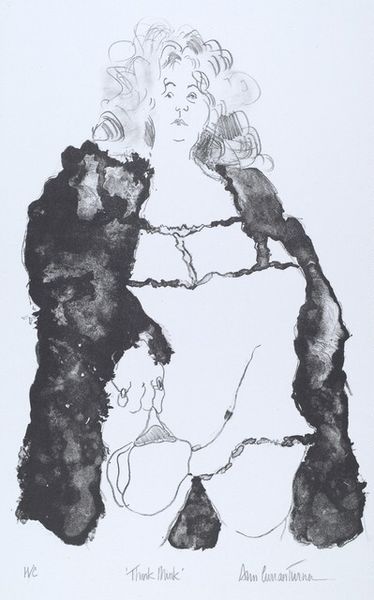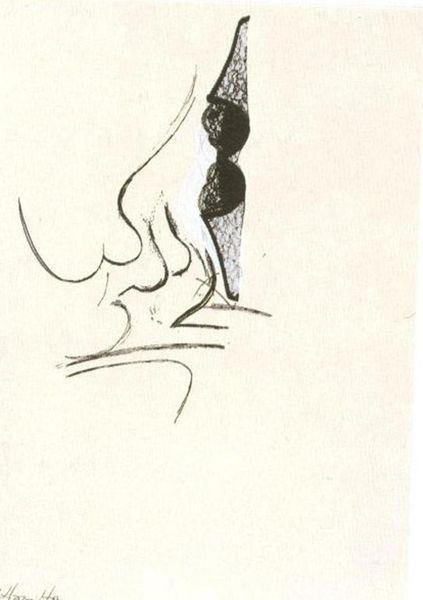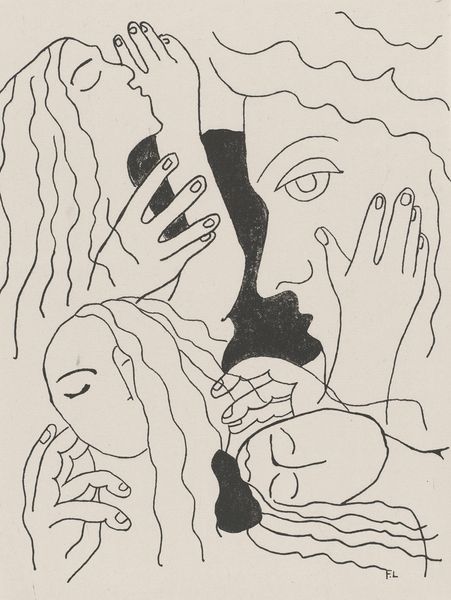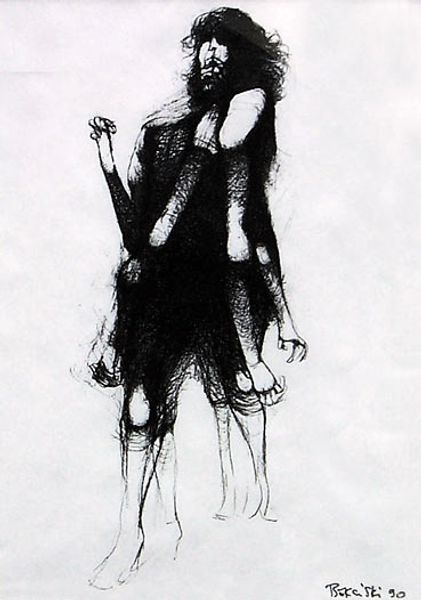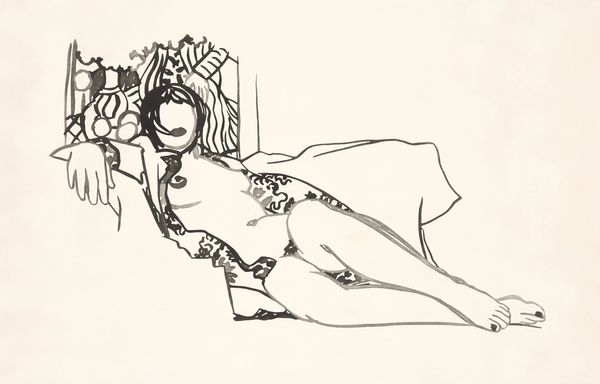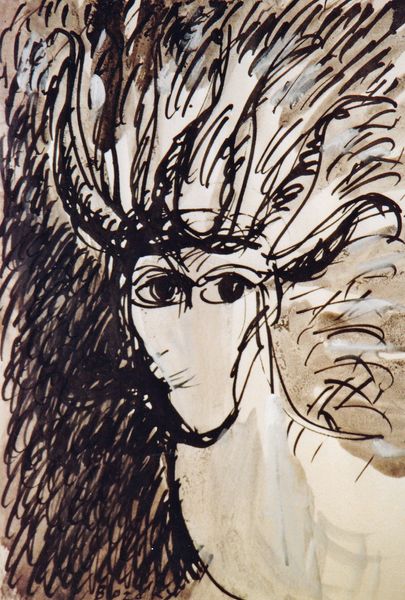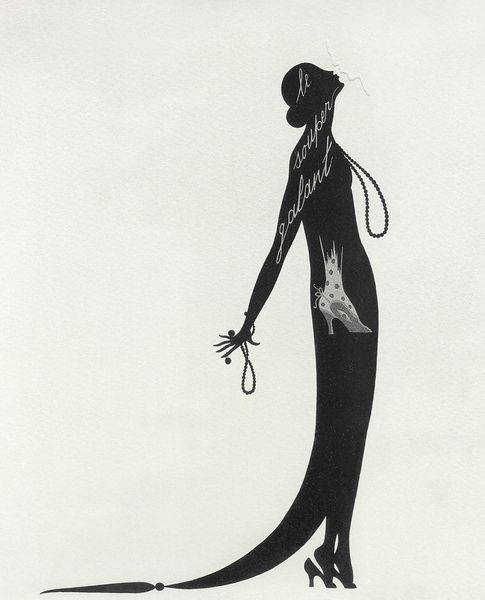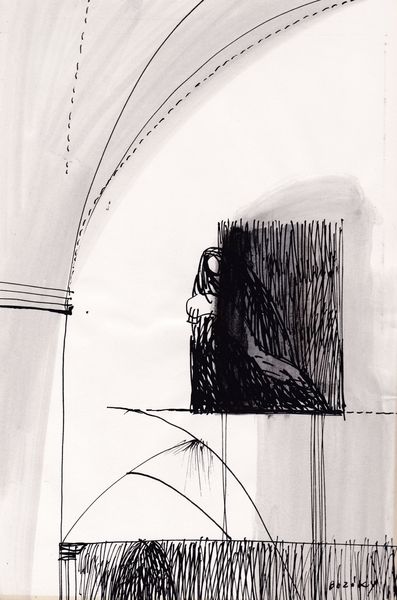
drawing, ink
portrait
drawing
art-nouveau
caricature
figuration
ink
surrealism
line
symbolism
nude
Copyright: Public domain
Editor: Here we have Aubrey Beardsley’s “Erda,” an ink drawing from 1896. The figure seems to emerge from a dark, almost chaotic landscape. It feels incredibly stylized, a little bit unsettling, almost like a fever dream. What strikes you most about it? Curator: What’s particularly compelling is how Beardsley engages with mythology and gender within the aesthetic and social climate of the 1890s. "Erda," drawn for Wagner's "Ring" cycle program, represents a powerful earth goddess. But look at how Beardsley presents her. Does she embody traditional ideals of female power and authority? Editor: I suppose not, she has an almost grotesque sensuality with an ambiguous expression that isn’t conventionally divine or maternal. Curator: Exactly! Beardsley, deeply embedded in the aesthetic movement and decadence, uses Erda to critique Victorian ideals. Her exposed breasts, the exaggerated lines, and even the almost caricatured face challenge conventional notions of female beauty and power prevalent at the time. The dense black ink creating the "chaotic landscape" you mentioned can be seen as a visual representation of repressed desires bubbling beneath the surface of Victorian society. What do you make of the flatness and lack of conventional depth? Editor: I think it heightens the sense of unreality, almost like a stage set, reinforcing that critique. It feels performative, like a commentary on constructed identities. Curator: Precisely! He uses visual language to reflect society back on itself. Think about how exhibitions like the "Black and White Room" promoted the format of black-and-white prints as high art. Beardsley's medium participates directly with discussions surrounding the elevation of the art form, expanding how illustration can interact within social dialogue. How different it is to see the mythological represented this way versus say in neoclassical painting! Editor: That's true. Seeing "Erda" through a historical lens really enriches the experience, providing a glimpse into the social tensions of the period and Beardsley’s rebellious commentary. Curator: Indeed. And it highlights the dynamic relationship between art, social norms, and the evolving role of women and mythology.
Comments
No comments
Be the first to comment and join the conversation on the ultimate creative platform.
